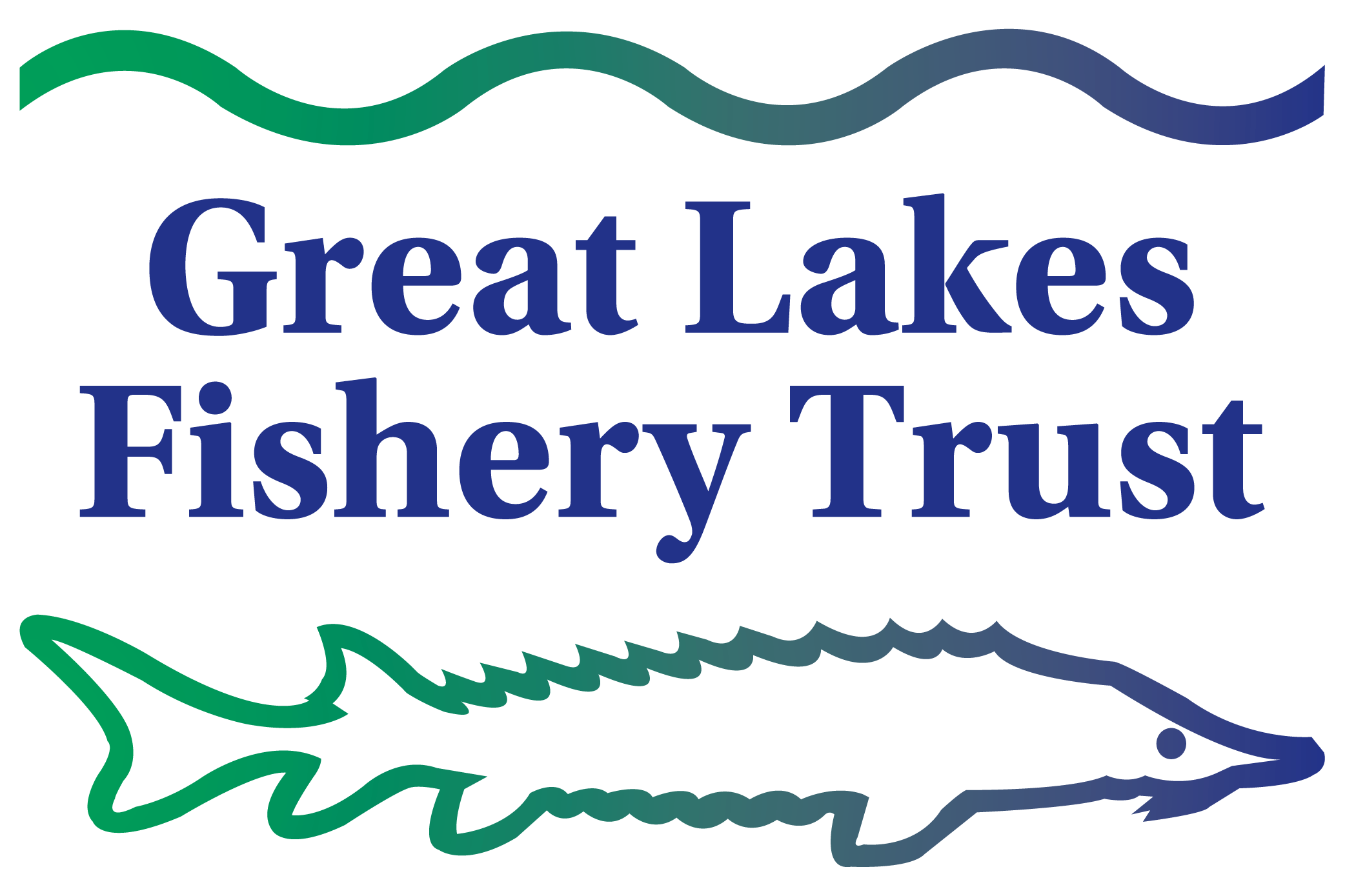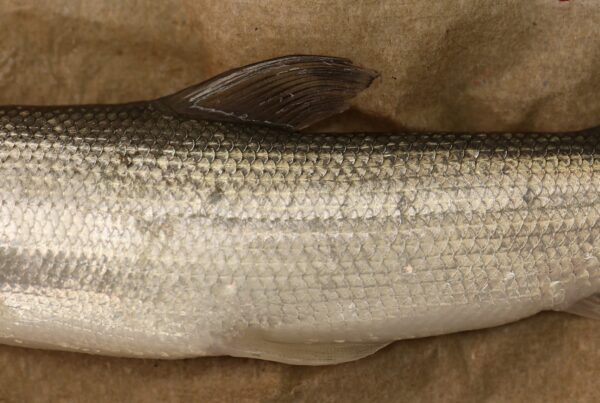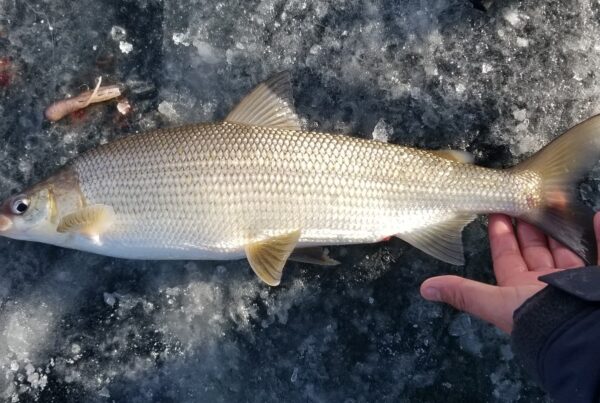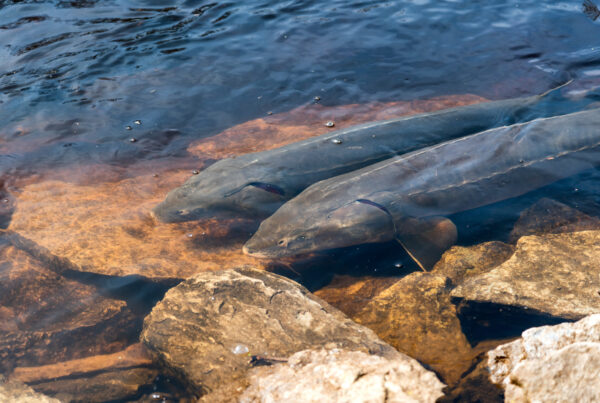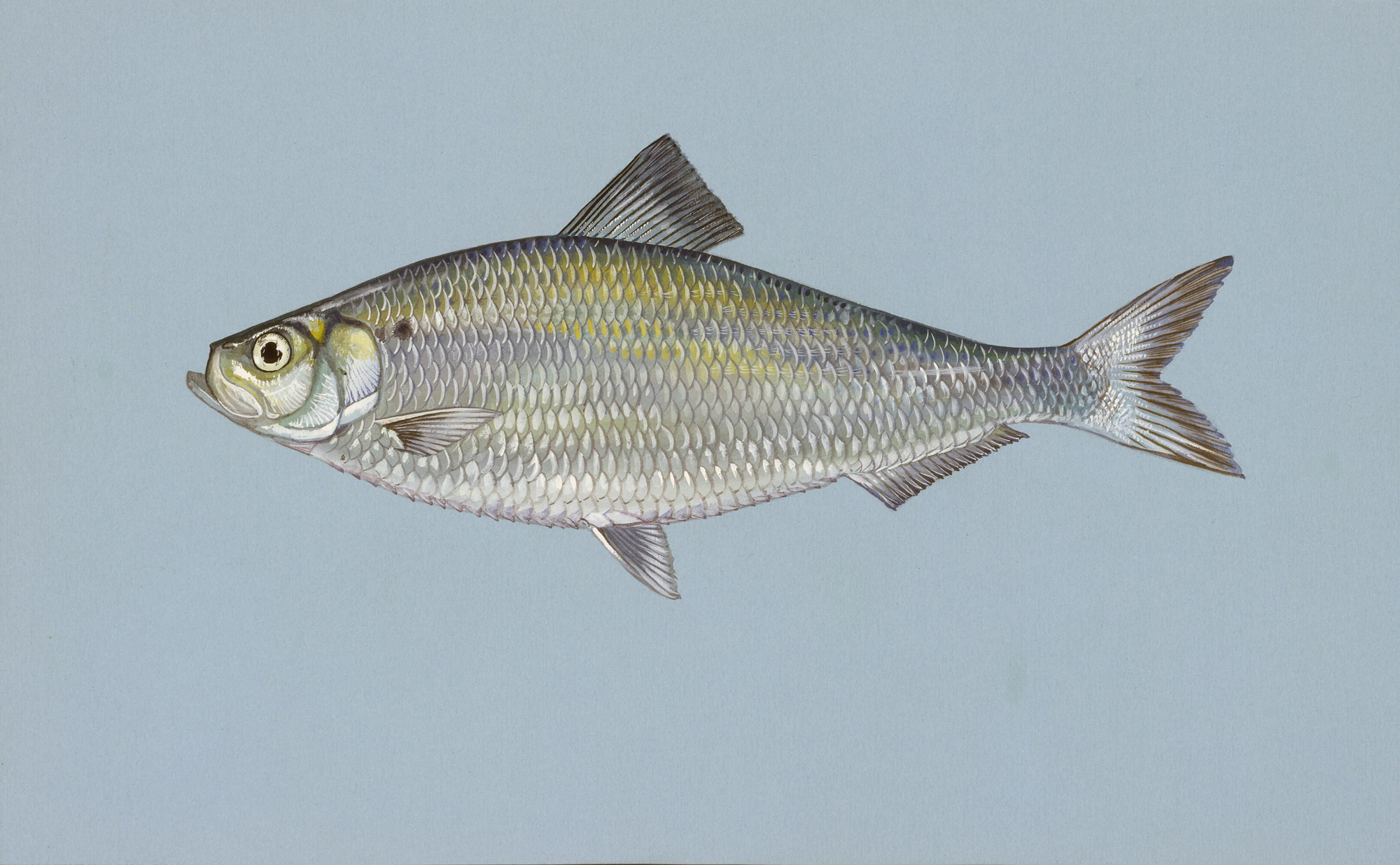
In the warmer waters of spring, yellow perch lay their eggs in long, gelatinous strands, usually among the thick vegetation found in the shallow waters of rivers and along the shores of lakes. A single female can lay more than 20,000 eggs; however, the vast majority of fish that come from these eggs will die very early, primarily due to predation and starvation.
To cultivate self-sustaining stocks of fish, fisheries managers need to understand how best to help young fish survive. For example, among all the different habitats in and around Lake Michigan, are there particular ones where larval and juvenile yellow perch—as well as other species, like round gobies and alewives—can find the food and water conditions they need to thrive? And how do these fish use different habitats as they grow?
The Angle
A team of researchers hypothesized that river plumes—which have unique thermal, light, nutrient, and biological properties—would provide an excellent place for larval yellow perch, round gobies, and alewives to grow. They also wondered how the three species used river mouths, river plumes, and the nearshore waters of southeastern Lake Michigan. Did the young fish function the same regardless of their environment, or were there important differences among habitats?
The Nitty-Gritty
To test their hypotheses, researchers (1) collected water samples from river plumes and adjacent nonplume areas in southeastern Lake Michigan to compare their physical, chemical, and biotic conditions; (2) estimated the movement of larval fish from tributaries into Lake Michigan; (3) compared the densities, diets, and growth rates of the three species in different areas; and (4) evaluated the extent to which later-stage fish used tributaries and river plumes as early life habitats.
The interdisciplinary research team—which included, among others, a fish ecologist, a physical scientist, and a water isotope specialist—used a number of different tools and methods (including otolith isotopic analysis) to better understand fish movement, as well as habitat contributions and linkages.
The Results Are In…
The researchers found that, while river plumes in southeastern Lake Michigan present a somewhat different environment than open lake waters (they are a little bit warmer and more turbid), they are very small and not the hotspots of production that researchers anticipated. Data do suggest, however, that river mouths have greater potential for production, particularly for alewives.
Perhaps the most important finding, though, is that there was a clear distinction between river mouth and nearshore populations of yellow perch and round gobies, but not alewives. An analysis of diets, fatty acids, and stable isotopes, as well as isotopic analyses of otoliths, show that alewives move back and forth between the habitats (the river and the open lake water) with some regularity, while yellow perch and round gobies stay mostly in the same habitat for life.
What Does It All Mean?
Although river plumes were not as productive as researchers originally surmised, river mouths show some promise as production hotspots and, therefore, warrant further study. They may be particularly good environments for larval alewives. Given recent concerns about the considerable year-to-year variations in the alewife population, and their important role as prey for other valuable fish, river mouths may hold some management answers.
More important, however, is that fish managers now have a clearer understanding of the yellow perch, round goby, and alewife populations. This information could be of great value when making decisions about regulations for managing these species and helping more larval and juvenile fish survive.
Further Reading
“The fascinating thing about research,” says Jon Beard, grant manager for the Great Lakes Fishery Trust (GLFT), “is that it’s not just about proving or disproving a hypothesis. Sometimes the most interesting results come from other knowledge gained along the way.”
This was true of a recent GLFT-funded project, which aimed to determine how tributaries and river plumes serve as nursery areas for certain fish species.
“One of the most interesting findings in this project from a fisheries management perspective is not that river plumes weren’t hotspots of production, but that researchers found that yellow perch and round gobies in nearshore Lake Michigan and river mouths rely on distinct trophic pathways and do not appear to move frequently between the two habitats,” Beard says. “This information has real potential for use by management agencies.”
In fact, the GLFT has already funded another study to expand understanding of the topic.
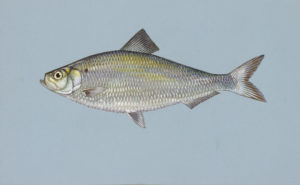
Alewife (Alosa pseudoharengus).
Originally, the research team focused its attention on evaluating the production potential of river plumes. In the process of characterizing and evaluating them, researchers asked two other important questions: How do juvenile yellow perch, round gobies, and alewives use different habitats (including river mouths and the open lake)? And how do those habitats support fish growth?
To answer these questions, the research team looked at the diets of the fish and at different bio-chemical indicators. These indicators included fatty acids and stable isotopes, which scientists use to assess the type of production pathways that support fish growth.

Yellow perch (Perca flavescens).
Tomas Höök, associate professor in the Department of Forestry and Natural Resources at Purdue University and one of the grant’s principal investigators says, “We found distinct signatures in the stable isotope ratios and fatty acids of yellow perch and round gobies in the open lake versus those in the river mouth.” That means that, for the most part, those fish do not go back and forth between the lake and the river; instead, they stay primarily in the habitat where they were caught.
“We saw the isotopic values we would expect to see of fish that have spent their lives almost entirely in the lake or almost entirely in the river mouth,” says Höök. The same was not true, however, of alewives. Because they are more migratory by nature (alewives live in the lake and run into the river to spawn), their fatty acid and isotopic signatures were similar, regardless of the habitat in which they were found.
These findings were reinforced when researchers examined the otoliths in the three species. As Höök explains, “Otoliths are a more or less biologically inert structures in the heads of fish that grow like crystals. They start as very small crystals and, as the fish grow, material is deposited onto the otoliths. Once material is deposited, it’s not sequestered back into the body, so it can give us an idea of the different environments a fish has experienced over time.”
With each of the three species, the research team analyzed the isotopic makeup of the edge and the middle part of the otolith to determine where it had lived. Not surprisingly, in most cases, when it came to yellow perch and round gobies, the core otolith signature was similar to the environment in which the fish were caught, whereas the otolith signatures of alewives were not.
“These findings suggest that yellow perch and round gobies may have a more complex spawning stock structure than alewives in Lake Michigan, which has important management implications,” says Carl Ruetz, professor with the Annis Water Resources Institute at Grand Valley State University. “For example, if yellow perch are composed of numerous subpopulations along the periphery of the lake, managers will need to recognize and account for that diversity when formulating regulations related to yellow perch management.”
More research is needed to determine whether this is the case.
Another finding managers may find useful is that while river plumes were not hotspots of production, as researchers first hypothesized, river mouths appear to hold more promise. “The conditions in the river mouth seem to be good for some fish,” explains Höök. “It’s warmer, it’s turbid, and we found that larval alewives, in particular, are growing better there than in the open lake.”
Given recent concerns about the high variability in alewife populations from year to year, as well as their role as important prey for other valuable fish, river mouths may hold some management answers.
As for the original hypothesis, Höök and the other members of the research team thought that river plumes might be a productive environment for yellow perch, round gobies, and alewives, because they (1) concentrate diverse abiotic (e.g., sediment) and biotic constituents (e.g., bacteria, phytoplankton, zooplankton, and larval fish), (2) stimulate primary and secondary production, and (3) provide thermally suitable conditions. In fact, earlier research on yellow perch in western Lake Erie found that larval survival was, indeed, higher in the Maumee River plume than in surrounding nonplume waters, due to high levels of turbidity (or murkiness). That research suggested that the turbidity of the water probably reduced the ability of predators to find young fish, which increased their survival rate. Höök and his fellow researchers thought they might see similar results in the river plumes of southeastern Lake Michigan.
Mean Densities of Larval Alewife and Yellow Perch

Mean densities of larval alewife and yellow perch during May through August 2011 and 2012. Alewife densities were generally higher at river sites, while yellow perch tended to be more dense at lake sites.
After collecting samples from five tributaries over the course of two years, the research team did find that river plumes present a somewhat different set of environmental conditions than the open lake. According to Höök, the plumes “are a little bit warmer and the water is a little bit murkier, which may facilitate foraging and protect young fish from predators. You also see a higher concentration of nutrients in plume versus nonplume areas.”
Unfortunately, the plumes in southeastern Lake Michigan are very small, even in the St. Joseph River, which is the third largest river system in the state and the largest river included in the study. The size of the plumes—or more specifically the length of time that critical materials stay in them—matter.
“We found that resident time of water spent in a plume, at the longest, is about day,” explains Höök. “On most occasions, it’s much shorter. So, even though the environment is somewhat distinct, it’s really quite limited.”
In the end, says Höök, “this really is a habitat issue. You have to understand habitat utilization in order to make predictions about the fish population and to figure out how to manage them.”
Because of this GLFT grant, managers now have a better understanding of the yellow perch, round goby, and alewife populations themselves, as well as how they move, how they use different environments, what resources support their growth, and the relative contribution of different habitats to survival. This is important information for managers to have as they work to help more larval and juvenile fish survive.
